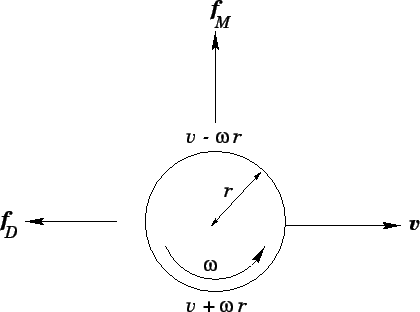| (43) |
The origin of the force which makes a spinning baseball curve can
readily be appreciated once we recall that the drag force acting on a
baseball increases with increasing speed.22For a ball spinning about an axis perpendicular to its direction of travel, the
speed of the ball, relative to the air, is different on opposite
sides of the ball, as illustrated in Fig. 12. It can
be seen, from the diagram, that the lower side of the ball has a larger
speed relative to the air than the upper side. This results in a larger drag force
acting on the lower surface of the ball than on the upper surface. If we think of
drag forces as exerting a sort of pressure on the ball then we can readily
appreciate that when the unequal drag forces acting on the ball's upper and lower surfaces
are added together there is a component of the resultant force acting upwards. This force--which
is known as the Magnus force, after the German physicist Heinrich Magnus,
who first described it in 1853--is the dominant spin-dependent force
acting on baseballs. The Magnus force can be written
| (44) |
 |